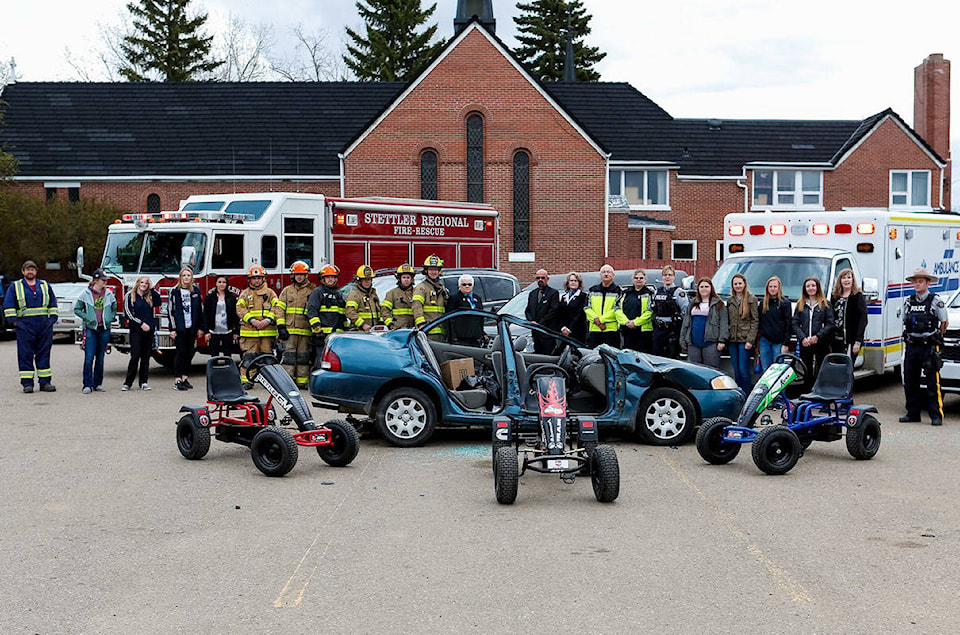High school students at William E. Hay Secondary recently took part in the annual mock accident/distracted driving obstacle course event.
Designed for the graduating class, the event included emergency personnel as well as the students from S.A.D.D (Students Against Destructive Decisions) utilizing carts while wearing fatal vision goggles through an obstacle course as well.
“We aim to have it just before the May long weekend,” said Cst. Jon McNickle, school resource officer of the Stettler RCMP Detachment.
It’s all about driving home the message of the dangers of both impaired and distracted driving, he said, adding that this year there was an added focus on distracted driving.
“In my personal opinion, it’s actually a bigger issue with the youth.”
McNickle said the fatal vision goggles are a powerful tool to help teach the students.
“I do a piece with the goggles and another piece where they are distracted,” he explained.
One facet of the distracted driving component is, as a passenger, to find a landmark and as they pass it, they are instructed to close their eyes and count to four.
Many are quite surprised to see how far they’ve gone in just those few seconds.
“Then I ask them, how long do you think it takes you to text someone? Most of them will say five to 10 seconds for a quick message,” he added. “I ask them to think about that - you are essentially closing your eyes for 10 seconds while you are hurtling down the road.”
The image of the mock accident scene is a powerful reminder of the potentially deadly impacts of both impaired driving and texting while driving as well.
“I ask them to think about the person who was sending the text message that caused the crash,” he said. “I try to push the message that nothing is that important. Nothing is so important that it can’t wait until you get where you are going.”
The best thing to do is to toss your phone into the backseat if you are driving alone, or hand it over to your passenger.
“Especially with the younger people, they’ve pretty much grown up with these devices,” he said, adding that it’s likely the majority of the students taking part in the mock accident/obstacle course have had cell phones since before they were 10 years of age.
As for the fatal vision goggles, McNickle said that there are about 10 different kinds that simulate various alcohol impairment levels.
“There are some that simulate different levels of fatigue or drug impairment as well. So I have the kids drive the course with those, too.
“At the end of the course, they’ll say they thought they did pretty well, and I’ll point out that they actually had about 15 violations,” he added. “I also challenge them, the next time they are a passenger, to do that four second test to see just how far they go.”
He also encourages them to try it at various speeds, as a passenger of course, in town, out of town heading to Red Deer for example or on Highway 2 at maximum speeds.
Ultimately, McNickle does feel that the message does reach most of the students.
When they hear how poorly they drive with either the goggles or with the distractions of handling a phone, they have a better understanding how these things can lead to dangerous and even deadly crashes, he said.
